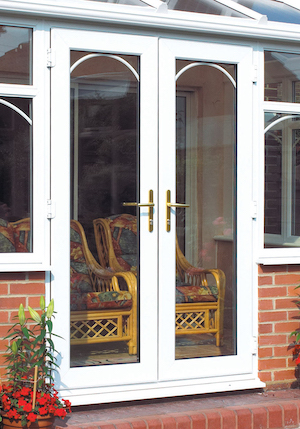
Wooden French Door Repairs
Add a review FollowOverview
-
Founded Date December 7, 1963
-
Sectors Turizam i ugostiteljstvo
-
Posted Jobs 0
-
Viewed 16
Company Description
You’ll Be Unable To Guess French Door Refurbishing’s Tricks
French Door Refurbishing: Breathing New Life into Your Home
French doors are a classy addition to any home, offering a smooth connection between indoor and outdoor areas. With time, nevertheless, even the most stunning French doors can start to show signs of wear and tear. Whether it’s peeling paint, distorted frames, or outdated hardware, refurbishing French doors can boost their look and enhance functionality. This comprehensive guide details the step-by-step procedure of refurbishing French doors, the products required, and answers to common questions.

Why Refurbish French Doors?
Refurbishing French doors serves several functions:
- Aesthetics: Refreshing the paint or surface can enhance the visual appeal of a home.
- Functionality: Repairing issues such as sticky or misaligned doors improves usability and effectiveness.
- Value Addition: Well-maintained french door refurbishing doors can increase home worth and draw in prospective purchasers.
- Energy Efficiency: Sealing spaces and updating hardware can enhance insulation and decrease energy costs.
Step-by-Step Guide to Refurbishing French Doors
Step 1: Assess the Condition
Before starting the refurbishment, carry out a comprehensive assessment of the doors:
- Inspect the Wood: Look for indications of rot, warping, or insect damage.
- Examine the Hinges and Hardware: Ensure all parts are operating properly.
- Evaluate the Glass: Check for cracks or fogging in the panes.
Step 2: Gather Materials
Refurbishing French doors requires a number of products, consisting of:
| Material | Purpose |
|---|---|
| Sandpaper (various grits) | To smooth out the surface area |
| Wood filler | To repair cracks and holes |
| Paint or stain | To revitalize the color of the doors |
| Paintbrushes and rollers | For application of paint or stain |
| New hardware (hinges, knobs) | To change old or damaged parts |
| Sealing gasket | To enhance insulation around the frames |
Step 3: Remove the Doors
To successfully refurbish French doors, it is typically best to remove them from their hinges. This can typically be done by:
- Using a screwdriver to remove the screws from the hinges.
- Thoroughly lifting the door away from the frame, ensuring it’s supported to prevent damage.
Step 4: Prepare the Surface
Once the doors are removed, prepare the surface by:
- Sanding down the existing finish to eliminate peeling paint or irregular surfaces.
- Filling any holes or fractures with wood filler and allowing it to dry entirely.
- Smooth the filled areas with sandpaper for a smooth surface.
Step 5: Repaint or Re-stain
Pick either paint or stain, depending on the preferred appearance. Follow these standards:
-
For Paint:
- Apply a primer first, particularly if there’s bare wood.
- Use a top quality exterior paint ideal for the climate.
- Apply at least 2 coats, permitting full drying time in between applications.
-
For Stain:
- Choose a wood stain that matches the home’s visual.
- Apply with a tidy brush or cloth, rubbing out excess to achieve the wanted color.
- Seal the stain with a protective surface to boost durability.
Action 6: Update Hardware
While the doors are off, it’s a perfect time to change old hardware. Select new hinges and knobs that match the style of the home, guaranteeing compatibility with the existing hole placements.
Action 7: Rehang the Doors
After completing the refurbishing procedure, it’s time to rehang the doors:
- Align the doors back onto the hinges.
- Protect them with screws, ensuring they open and close smoothly.
Step 8: Seal the Gaps
Finally, to improve energy efficiency, seal any spaces around the door frame using weather stripping or a sealing gasket.
Frequently Asked Questions on French Door Refurbishing
Q: How much does it cost to recondition French doors?A: The expense can vary
extensively based on the extent of repairs needed, materials selected, and whether you work with a professional. DIY refurbishing typically varies from ₤ 100 to ₤ 400. Q: Can I recondition French doors myself?A: Yes, refurbishing French doors can be a DIY job if you have the
right tools and a little bit of experience with home repair. Q: How long does the refurbishing procedure take?A: This depends on the level of the work
; generally, refurbishing French doors can take anywhere from a weekend to a couple of weeks, especially if you are permitting time for paints and fillers to dry. Q: Do I require special permits for refurbishing doors?A: Typically, refurbishing does not need licenses, however if you’re making structural changes
, it’s finest to check local regulations. Refurbishing French doors is a rewarding process that not just enhances the visual appeals and functionality of your home however likewise improves energy efficiency and home worth
. By following the actions laid out in this guide, house owners can revitalize their French doors, providing a classic elegance that compliments their living areas. Whether you tackle this task alone or enlist the assistance of experts, a little effort goes a long method in keeping these timeless doors looking gorgeous for several years to come.